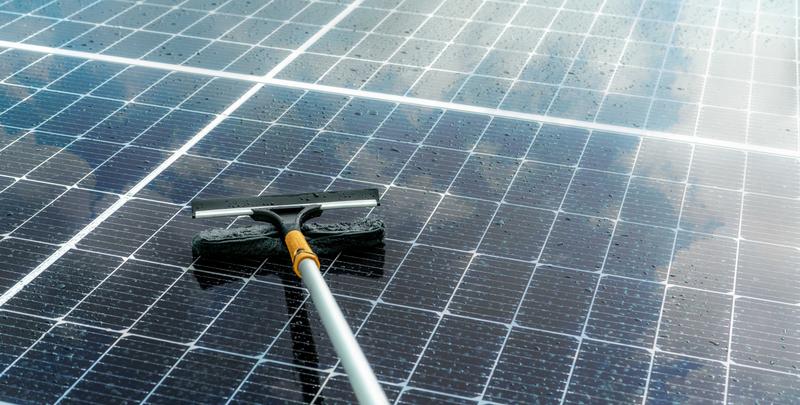
For those who’re attempting to find a higher-overall performance
Why Photo voltaic Panel Cleansing Matters
Photo voltaic panels seize Vitality at their best when clear. Dust, pollen, chicken droppings, and smog decrease performance—sometimes by 20% or maybe more. Standard cleansing assists manage best performance, prolong panel everyday living, and secure your investment decision.
Most important Gains:
- Enhanced Electricity output
- Decrease energy expenses
- Prolonged panel lifespan
- Lowered chance of micro‑cracks due to thermal hotspots
Kinds of Photo voltaic Cleaning Instruments
Choosing the suitable Resource relies on your set up, h2o availability, and desired benefit. Classes include things like:
- H2o‑run solar brush units
- Portable solar panel cleansing package bundles
- Pure water cleaning systems
- Rotary solar brushes and extension poles
Water Run Photo voltaic Brush Units
These brushes connect to a h2o resource and spin though dispensing drinking water, combining cleansing and lubrication in a single stage. The result: spotless panels with out scratching.
Crucial Capabilities:
- Built-in h2o feed with the brush head
- Soft bristles Safe and sound for glass surfaces
- Rotary motion cuts down manual hard work
- Mounts on extension poles for rooftop accessibility
Transportable Solar Panel Cleaning Kit
A complete
- Brush head (mounted or rotating)
- Extension pole (adjustable lengths as much as six m)
- Hose adapters or speedy‑connect fittings
- Pure‑drinking water tank or filtration method
- Soft microfiber towels or squeegees
- Non‑abrasive cleansing Answer (if permitted)
Great things about All-in-Just one Kits:
- Commence cleansing with negligible set up
- Compact for storage or travel
- Appropriate with household or industrial photo voltaic arrays
Pure Drinking water Photo voltaic Cleansing Techniques
These methods purify area water—taking away minerals and Dust—so it received’t go away scale or streaks. Pure h2o empowers Qualified-grade outcomes without having chemical compounds.
How It really works:
- Pretreatment filtration (sediment, carbon, ion Trade)
- Remaining deionization or reverse‑osmosis phase
- Filtered drinking water circulated by brush for cleaning
- Residue‑free of charge drying—no spots or streaks left powering
Rotary Solar Brush & Extension Poles
For giant photo voltaic arrays or business use, a power-rotating head on a telescoping extension pole makes cleaning successful and Safe and sound.
Strengths:
- Fewer Bodily hard work, more rapidly coverage
- Attain roofs and ground‑mounted panels quickly
- Adjustable shaft lengths for various angles
- Common fast‑join guidelines for components
Center on Security & Best Tactics
Cleaning photo voltaic panels includes heights and slippery surfaces—safety to start with:
- Use non‑conductive extension poles
- Keep away from pressure washers which will crack glass
- Perform early or late to stay away from glare and heat
- Use grips and slip-resistant sneakers
- Notice neighborhood drinking water‑use rules or limitations
Action‑by‑Move Cleansing Plan
- Flip off the solar inverter or ensure method is deactivated
- Rinse panels with reduced‑stress water
- Use a brush (or photo voltaic brush package) with drinking water feed
- Scrub gently in overlapping, linear passes
- Rinse totally with clear water
- Dry with microfiber squeegee or gentle towel—only if needed
Deciding on the Ideal Photo voltaic Panel Cleaning Tool
Think about your set up plus your drinking water accessibility:
pure water solar cleaning
Upkeep & Treatment Suggestions
- Flush hose and brush immediately after Each and every use
- Retail outlet dry, thoroughly clean, and faraway from UV publicity
- Change worn brush heads—and Check out bristle softness
- Inspect seals and connectors for leaks
- Replace or thoroughly clean filters in pure‑drinking water units routinely
Eco-Friendly Cleaning Added benefits
Correct cleaning prolongs solar panel efficiency and lowers Electrical power squander. Utilizing water on your own—with no soaps or substances—allows preserve local ecology and avoids runoff pollution.
How Solar Panel Cleansing Impacts ROI
Smart maintenance making use of good quality brushes and kits keeps technique effectiveness topped up, minimizing the payback period of time and maximizing Strength produce after a while.
Value Things to consider & Price
- Drinking water‑powered photo voltaic brushes are Price tag-helpful and sturdy
- Pure drinking water techniques need upfront expenditure but supply constant, spot‑no cost cleansing
- Rotary brush kits Enhance productivity—worthwhile for big installations
- DIY kits help you save labor expenditures; Specialist providers cost extra but unencumber your time and effort
Common Takes advantage of of Solar Panel Brushes
- Household rooftops
- Industrial photo voltaic farms
- RV or cellular installations
- Photo voltaic carports
- BIPV segments (creating‑built-in photovoltaics)
Buyer Testimonies & Use Situations
“This solar panel cleaning brush built a apparent difference in minutes—dust long gone, no streaks, and our output improved!”
“Upgrading to your water‑driven photo voltaic brush saved hours of scrubbing. Combined with a pure drinking water system, the panels seemed new.”
FAQs About Solar Panel Cleaning
How frequently should panels be cleaned?
Each and every six to twelve months, according to your weather—more usually in dusty or pollen-significant regions.
Can rain thoroughly clean solar panels?
Rain can help but doesn’t eliminate Grime buildup or film layers—guide cleansing yields improved overall performance.
Can I use tap drinking water?
Tap drinking water may well go away mineral residue. A
Can cleaning injury panels?
Only if abrasive resources or substantial-force washers are applied. Generally use tender bristles, small-tension, and abide by company guidelines.
Professional Guidelines for Photo voltaic Panel House owners
- Clear early morning or evening to stay away from thermal worry
- Observe output facts—if effectiveness drops, cleanse panels
- Hold panels angled—standing water encourages algae expansion if still left too long
- Rotate brush heads periodically to take care of even dress in
Conclusion: A Brush For each and every Need to have
No matter whether you’re looking for a price-powerful
Take a look at the full line of brushes and equipment built specifically for solar cleaning at